
Exhibition Review by Sopio Kolkhidashvili
“Confessions of a Mask derives its title from a 1949 novel of the same title by a Japanese author Yukio Mishima. Set in a heavy patriarchal society during the ultra-right wing militarist moment in Japan, the novel narrated through a lens of a young homosexual man, raises questions around the subject of the ability of love in the times when love is heavily controlled, manipulated and in the end excluded. When and if love at all is possible in a society which struggles to recognize one-another as equal, valid and true. Fascinated by the idea of a ‘false personality’ and ‘a reluctant masquerade’ critically addressed by the author in the novel, Meisenberg continues his research into binaries, such as, actual and virtual, graciously pointing at the beliefs of true and false in the exhibition’s cross-media dialogue, where the line between painting and sculpture is blurred.”
To enter the exhibition space, a visitor has to climb the stairs. At the top of the stairs, the painting Bodies in Regression (Max Mathew), 2022, greets the visitor and, at the same time, blocks the door to the front entrance of the exhibition space, directing the visitor to enter the exhibition space through another door on the left. On the painting it reads Yukio Mishima, Confessions of a Mask. This work is the first and primary description of the exhibition’s context and is the compass for navigating the space. On the same wall, in the lower left corner, there is a small painting, Dirty Laundry, 2022, representing a figure of a naked woman. The location of Dirty Laundry directly indicates to the viewer that the exhibition space is fully engaged in creating a site-specific exposition. Furthermore, the architecture of the space and Meisenberg`s works are curated in such a manner that the exhibition feels like one big installation without rejecting the characteristic of a white cube, which means that the visitor is in for a treat.
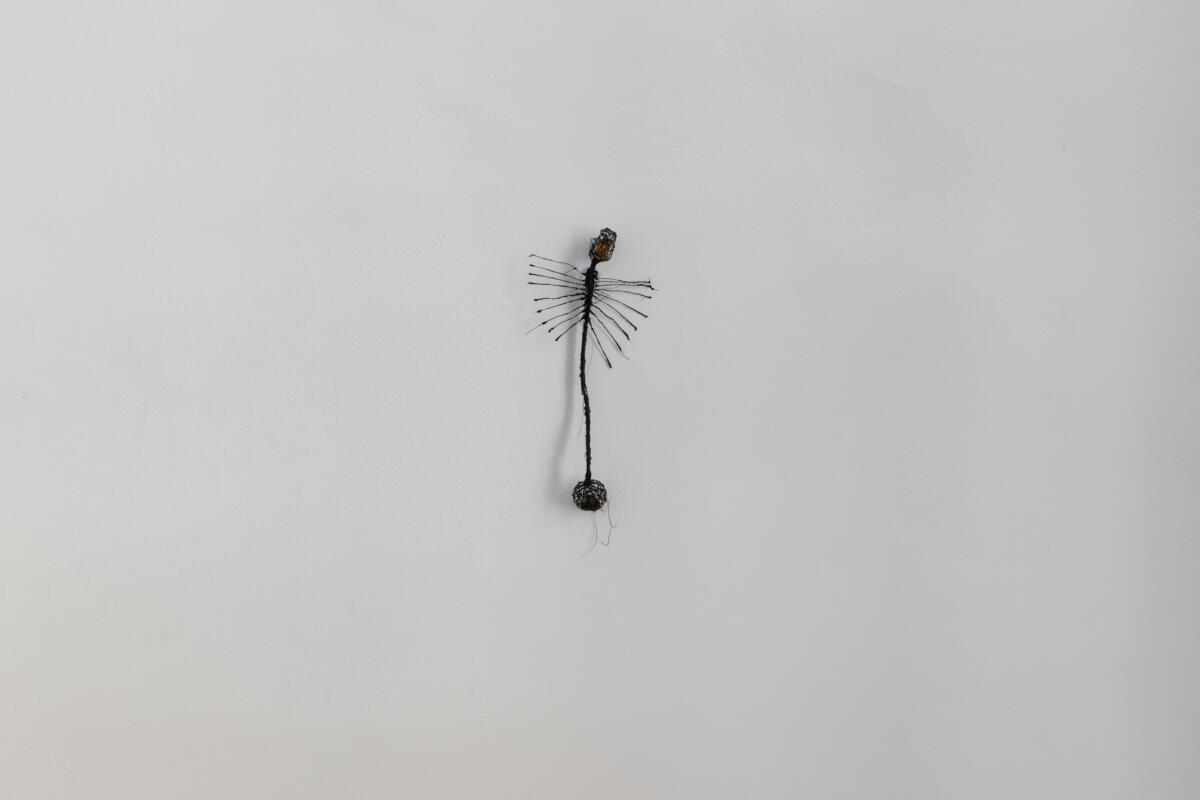


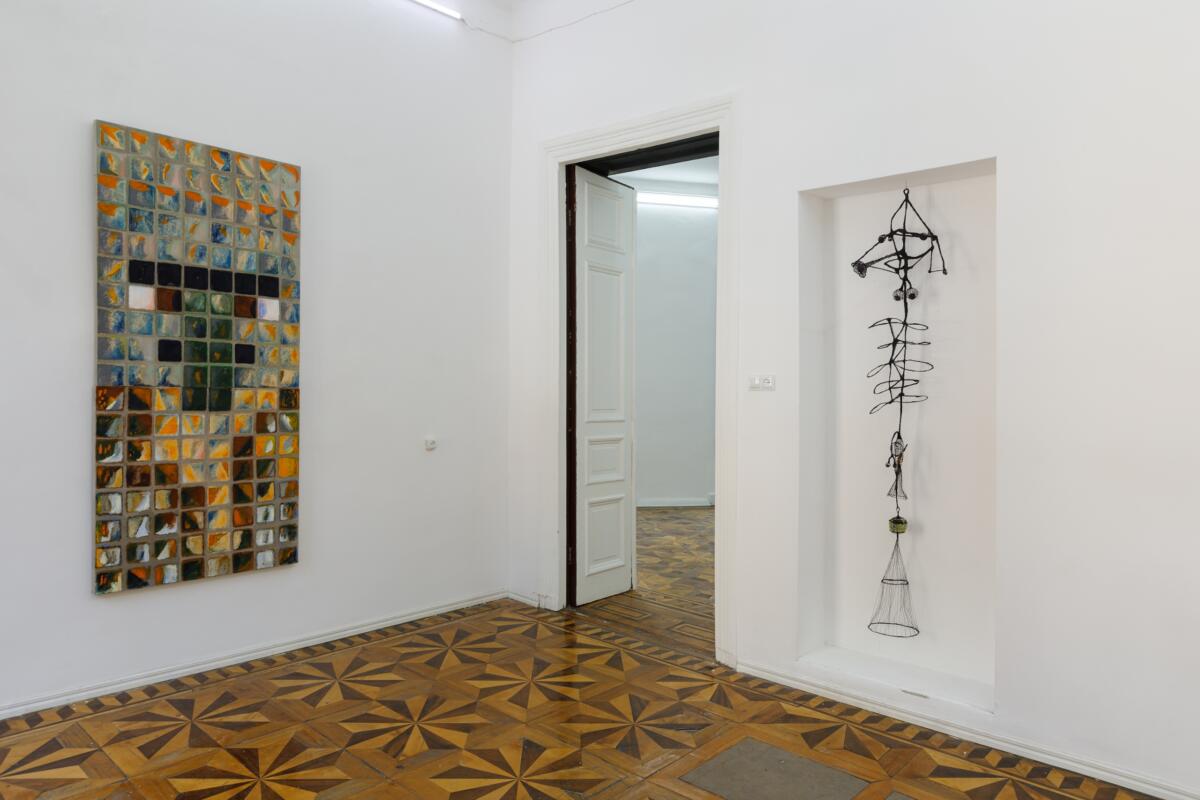
The visitor starts viewing the exhibition from the space on the left. Upon entering, a vertical canvas, The bebo, 2022, is presented on the wall directly in front of the visitor. The canvas is in the style of geometric abstraction. Systematically stacked squares fill the space, creating a visual association with the crucifixion scene. The upper margin of the painting illustrates the sky. In the middle we see the cross, and the lower part can be perceived as the mountain. The religious association is very individual and leans toward the spiritual for some visitors, but what unites us is that we are all enchanted by The bebo. It is also worth noting that the canvas repeats the color palette and the rhythm of the parquet floor and establishes a direct connection with the exhibition space around it. On the one hand, we are dealing with the reflection of the surrounding area in the painting. And on the other hand, the work’s non-figurative form carries a religious and spiritual connotation.
The exhibition presents PLA filament sculptures created with a 3D pen along with the paintings. Meisenberg uses a wire-frame modeling technique to create the filament sculptures. These sculptures, which represent different figurative forms, replicate the original shape and size of their content; Meisenberg wraps the 3D net around the flowers, fruits, and vegetables collected over months. Over time, the dried plants shrink in size yet the frames preserve the original shapes and sizes of the objects within. The combination of the original form and shrunken plants represents the visualization of the passing of time and the changes it brings.

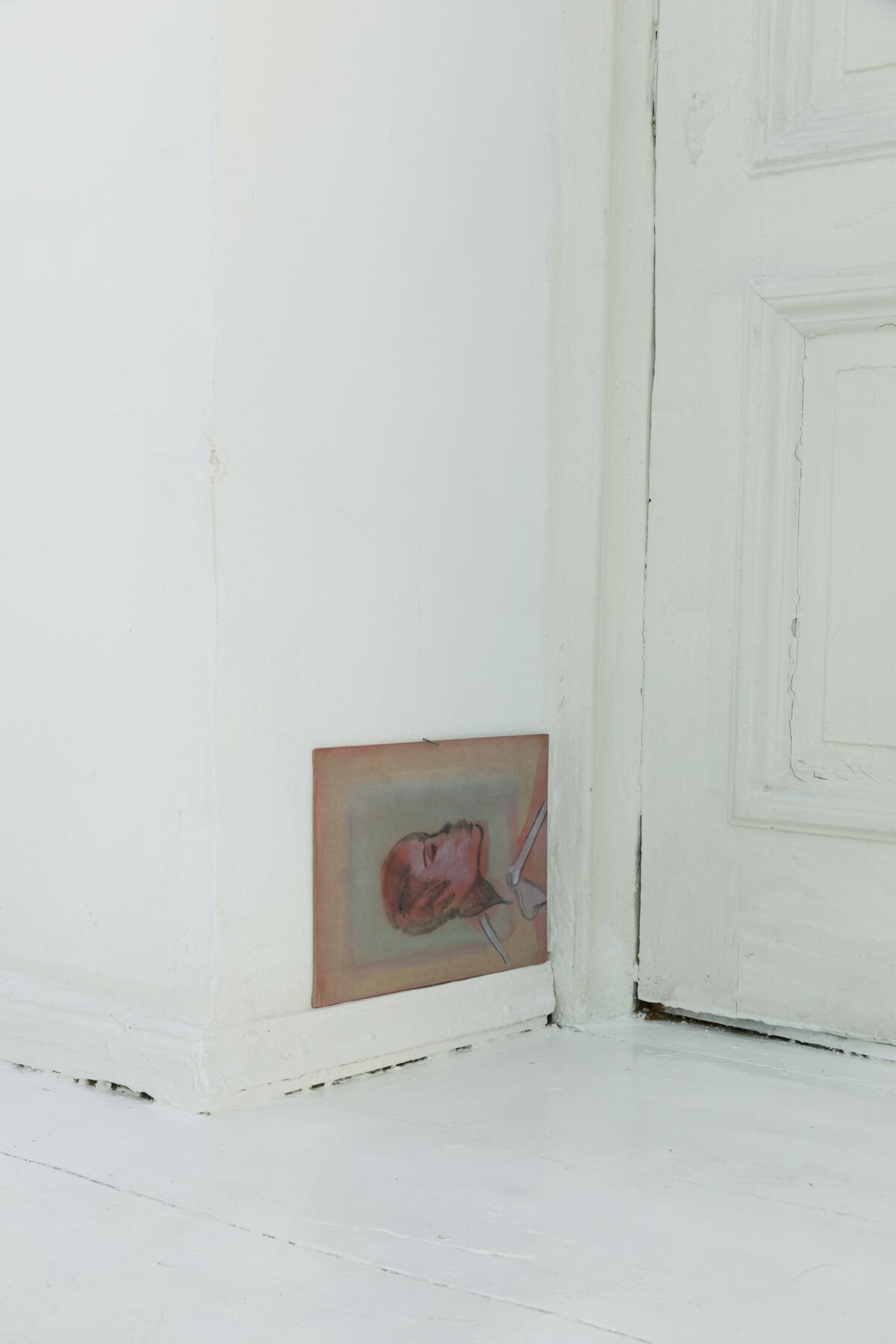
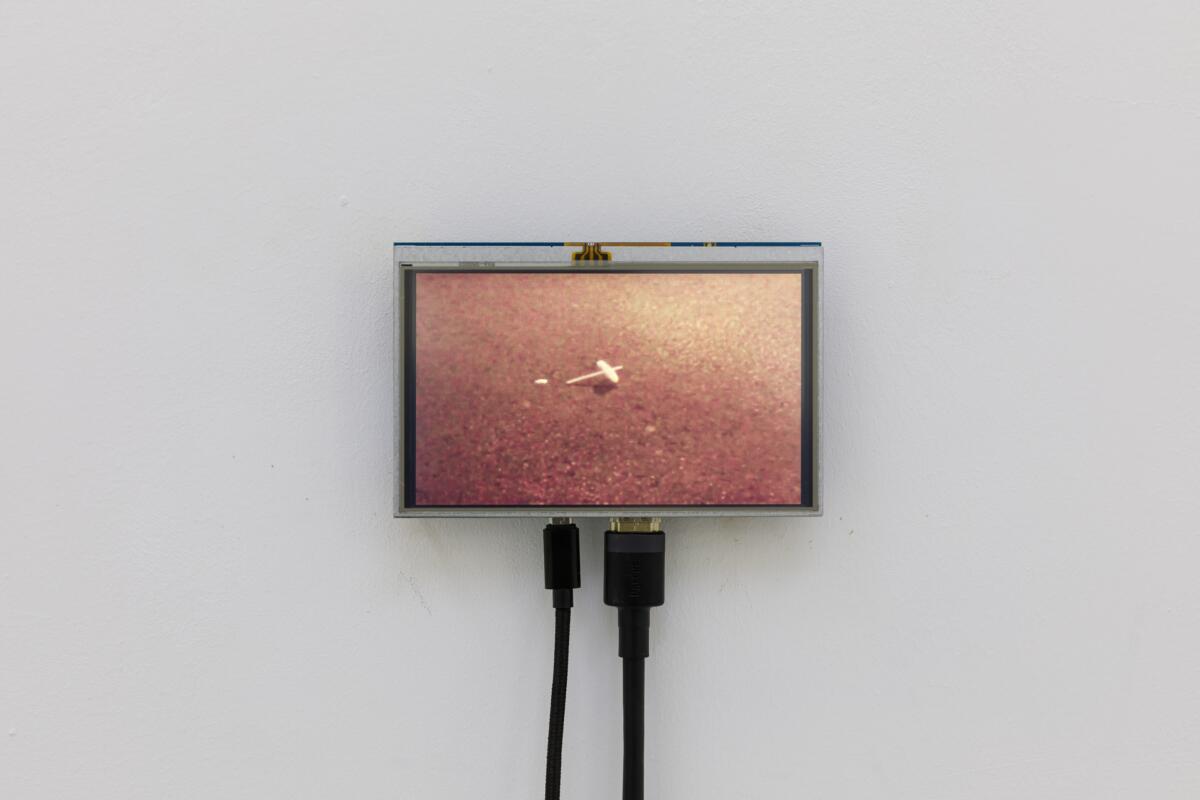
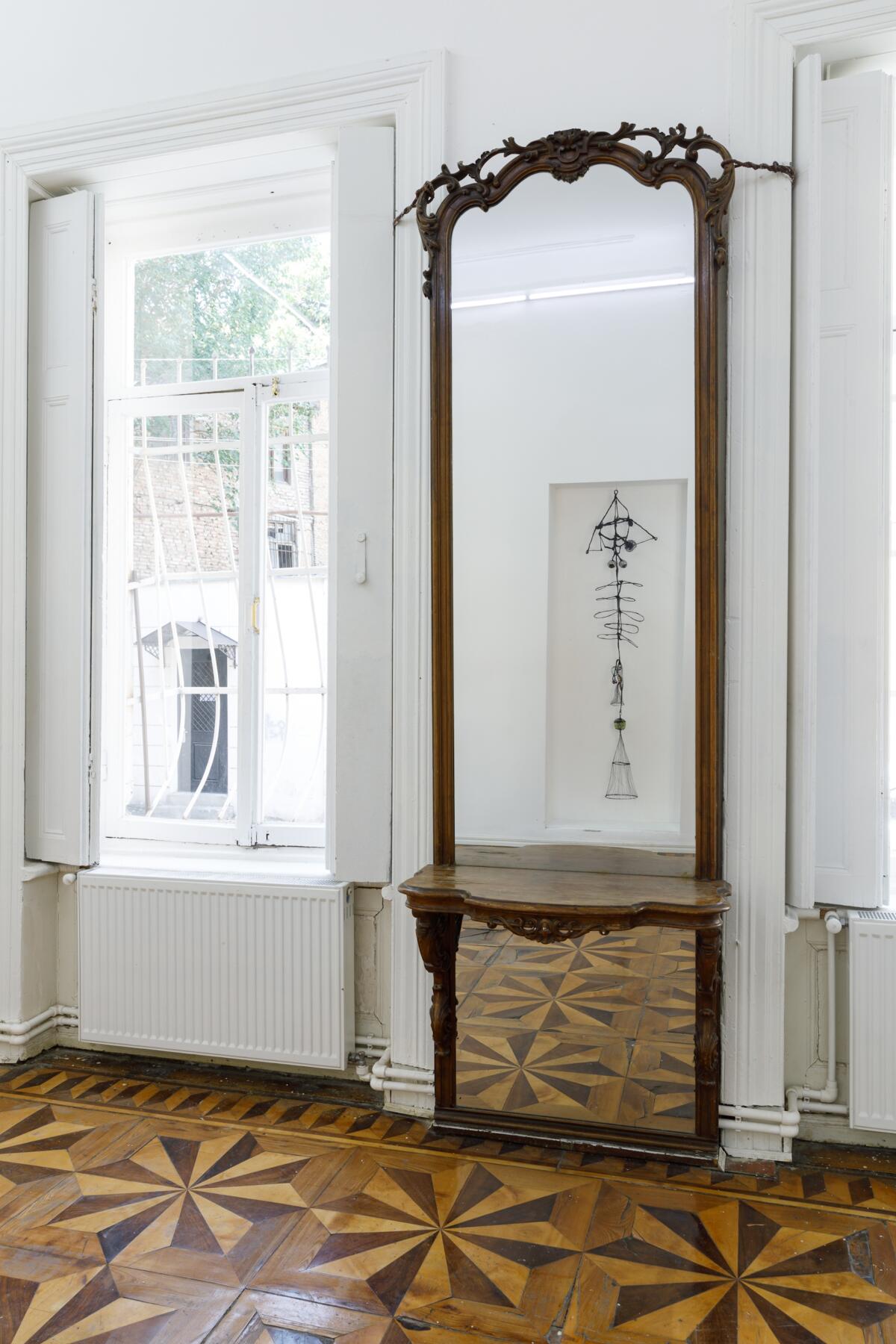
In the arch on the right wall hangs a filament sculpture, khidi, 2022, which is reflected in the mirror on the opposite side. Khidi resembles a fish skeleton, on which webbed spheres hang, in which various fruits or plants are placed. Its positioning in front of the mirror indicates the importance of seeing the subject from a different angle. Another wall presents a sculpture in the shape of an insect, bassiani, 2022. On the same wall, in the lower corner of the door, there is a painting portraying the combination of face and mask. The artworks presented at different heights, as well as the whole space, are reflected from one angle or another in the floor-to-ceiling mirror between the windows, which creates a non-physical space. In addition to the physical and non-physical spaces, the representation of the passing time in the room creates a multiverse.
Following the architectural outline of the building, the first thing that catches the viewer’s eye is the painting, The bici, 2022, placed in the corner. A geometric abstraction consisting of systematically placed pink, yellow, black, and white squares. The work replicates the exterior of the Government Chancellery building in front of the exhibition space, both in terms of color and the arrangement of tiles. The painting directly takes the materiality of reflection upon itself, symbolizes architecture, and once again emphasizes the importance of seeing reality from multiple angles. On the opposite wall, at different heights, there are filament sculptures. The uppermost sculpture visually resembles a clock. The painting, Portrait of Sri Chinmoy, 2022, near the floor, depicts a reclining figure of a skeleton. The interior and exterior spaces are connected with the work The bici, creating a contextual replica of the world outside, inside the exhibition space. The progression of time is visualized by the clock-like sculpture, the fruits in the sculptures, and the skeleton’s representation.
When entering the next room, a large canvas, The bridge over the bassinet (I am guilty, You are guilty, We are guilty), 2022, hangs on the wall, consisting of four panel paintings. Geometric lines create perspective and various plants and zoomorphic, symbolic figures fill the space. The longer one looks at the work, the more details one finds, and the more one is surprised by its visual variety. In the room, we also see a painting, My dominant hand turning into a werewolf, 2022, below the door, which depicts a hand with claws. In addition, there are sculptures of different shapes on the walls. The visual space consisting of vegetal, animal, figurative, and geometric figures represents the diversity of life, nature, and thoughts.

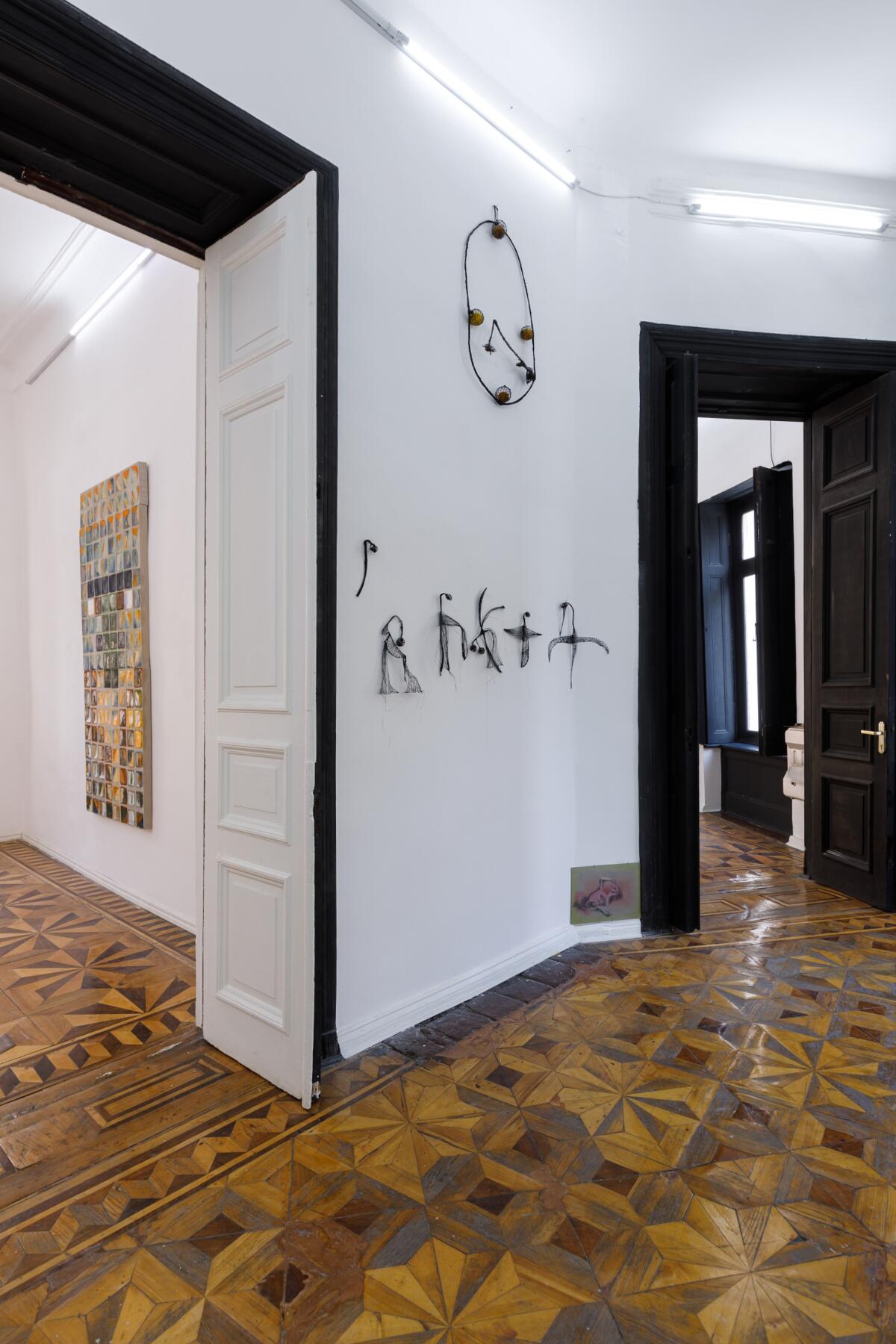
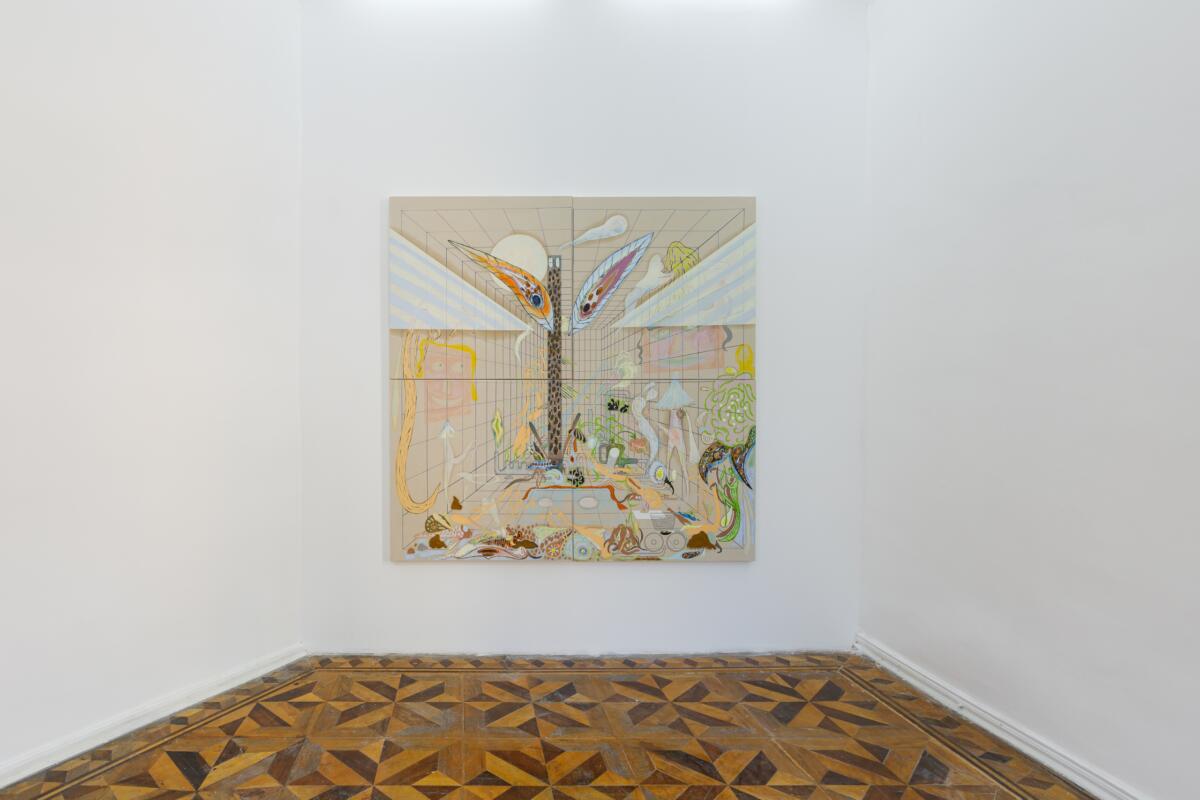

To see the whole exhibition, the visitor must return to the previous room and enter a small white space. Three small screens show Meisenberg’s three early single-channel videos, The vast mass of mankind is mere material, and only exists in order by some crossing of races and stocks, …., 2013, Homo Sacer, 2011, and Moving Stamp, 2014. Moving images created from documentary material rotate in a loop. They return to the question of the flow of time and the effects it leaves behind. Through the window in the door, the visitor sees Bodies in regression from behind, and as the light comes through the canvas, the viewer can see through it too. The visitor completes the circle when they end at the opposite side of the first painting, the loop of navigating oneself through the exhibition spaces stops when we return to the entrance. The exhibition is built so visitors can see every area from different entry points, opening additional views to reflect on.
After exiting the exhibition, the visitor, returning to the entrance for the first time, perceives the small room on the opposite side, which still functions as an office, as part of the exhibition space. The small paintings, sculptures, and various publications presented in this room introduce the viewer to the artist’s previous works and serve the same themes and questions.
By curatorial layout, the artworks, in some cases, are reflected in the mirror, portraying the interior and exterior of the spaces which become metaphors for society and time itself. They carry not only the context of which it is a direct visual representation but also that of another object. A multi-layered exhibition with the possibility to see something from a different angle or in another medium is created. Accordingly, the viewer must evaluate and engage in interactive exchange to understand the exhibition’s context. “When and if love at all is possible in a society which struggles to recognize one another as equal, valid, and true.”
It is easy to grasp Meisenberg’s exploration of binary oppositions, such as actual and virtual spaces and circumstances, true and false, and different realities or changes created by time in a cross-media dialogue. The works are an integral part of the surrounding space and culture, and finding love for an lgbtq+ individual and sexual liberation in Georgian society is a painful subject, which is thematically very close to the inspiration source for this exhibition, yet finding a visual link to the theme is more or less challenging despite the contextual connection. However, due to the complexity of the show and the possibility of multiple interpretations, this source of inspiration can still be traced. The small paintings beside the door close to the floor give us associations concerning this topic but my desire for it is to be more prominent.
The exhibition as a whole allows us to end the review positively and state that the artist has used and reflected the space allocated to him and the cultural environment around him in the works that he created for the exhibition. As a result, complex, multi-dimensional artworks and exhibition spaces are created that require the activation of various sensors from the viewer. And in this sense, it resembles an installation. All of the above resonates with most viewers and makes us think about the need to perceive artworks and environments from different angles, and the transience of it all.
Edited by Ewa Borysiewicz and Katie Zazenski
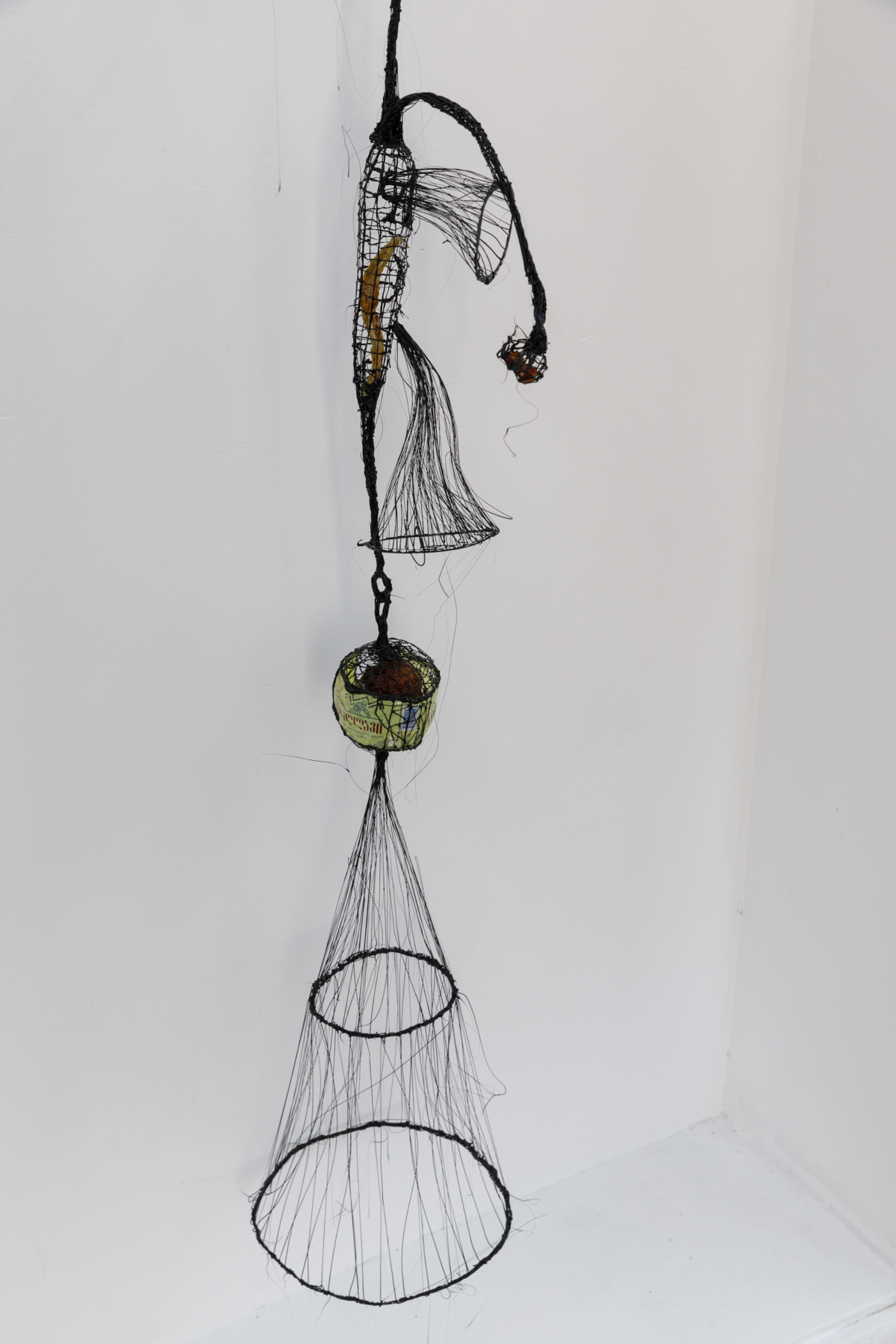


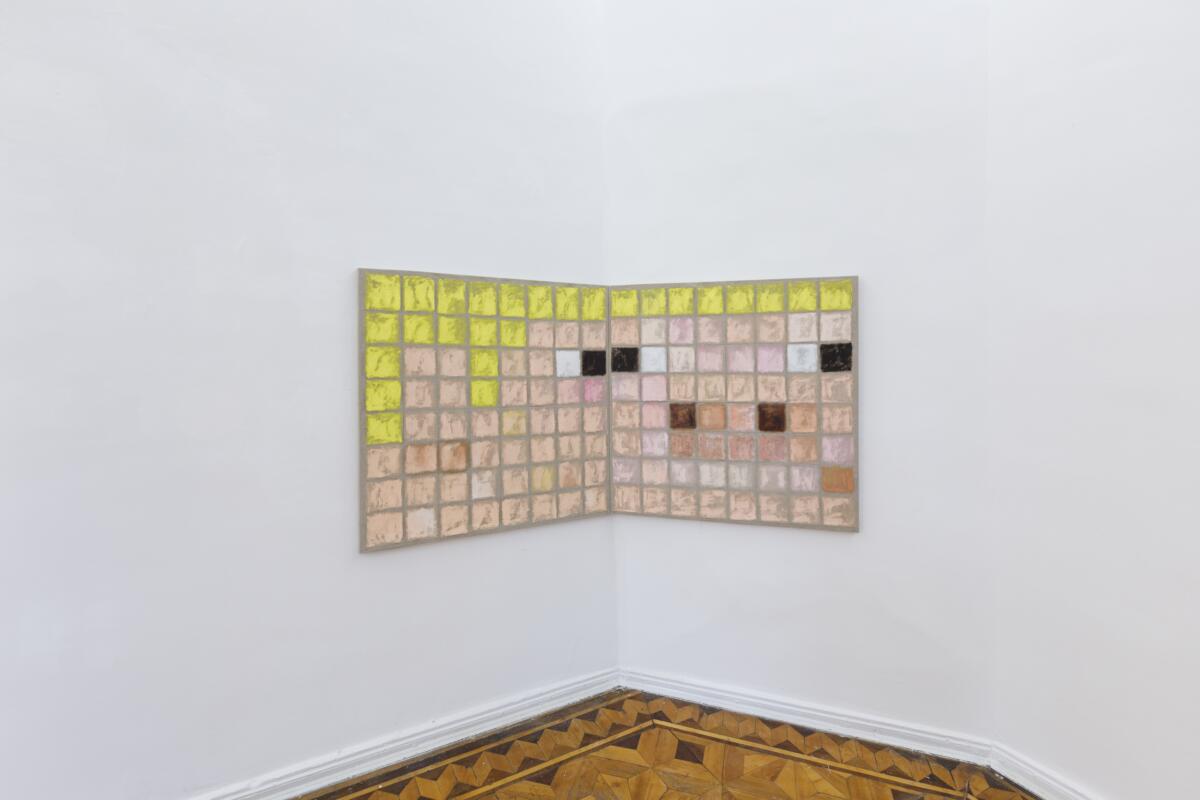
Imprint
| Artist | Florian Meisenberg |
| Exhibition | Confessions of a Mask |
| Place / venue | E.A. Shared Space |
| Dates | 16.09– 06.11.2022 |
| Index | Confessions of a Mask E.A. Shared Space Florian Meisenberg Sopio Kolkhidashvili Yukio Mishima |
